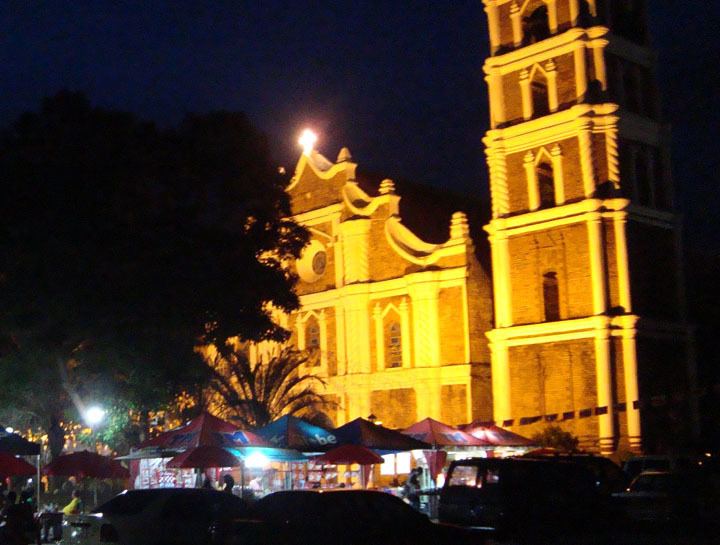Country Philippines Population 129,539 (2007) Area 144.80 km2 | Region Cagayan Valley Mayor Engelbert Caronan | |
Colleges and Universities Cagayan State University, University of Saint Louis - Tuguegarao, St Paul University Philippines, Maila Rosario College, Ateneo de Tuguegarao | ||
Tuguegarao is a third-class city and capital of the province of Cagayan in the Philippines. It is the regional and institutional center of Cagayan Valley region.
Contents
- Map of Tuguegarao
- Pinoy joyride tuguegarao city joyride 2014
- Groundcatch tuguegarao philippines
- History
- Economy
- Places of interest
- Festivals
- References
Map of Tuguegarao
The city is located on a peninsula surrounded by the Cagayan and Pinacanauan Rivers. The Pinacanauan joins the Cagayan River in Tuguegarao. The city is surrounded by the Sierra Madre Mountains to the east, Cordillera Mountains to the west, and the Caraballo Mountains to the south. It is one of the settlements on the southern border of the province.
Pinoy joyride tuguegarao city joyride 2014
The population of the city as of the May 1, 2010 census is 138,865 people. Most inhabitants are Ibanag, Ilokano, Tagalog, Itawes and Kapamapangan among others. Some are of Chinese and Indian descent.
Groundcatch tuguegarao philippines
The highest temperature in the Philippines was recorded in Tuguegarao on April 29, 1912, and May 11, 1969, at 42.2 °C (108.0 °F). Average temperature during March and April is 38 °C (100 °F), one of the highest in the country.
History

The community was governed as a barangay established by the Dominicans as a mission until the Spaniards gave it the status of pueblo (municipality) on May 9, 1604, making it one of the political units of the province of Cagayan. The settlement was a small in terms of population but was big in territory, which then included what would later become the provinces of Isabela, Nueva Vizcaya and Quirino till the 1850s. As a mission pueblo and with assigned encomendero (landlord) to Tuguegarao, the inhabitants (as tenants) were made to pay taxes in the form of poultry products and other food products. Resentments later flared and the people of Tuguegarao revolted in 1605, killing the encomendero. Again, the people of Tuguegarao revolted in 1718 and then 1761 under a leader named Rivera.

The first parochial building of Tugugarao was constructed in 1604, a chapel that became the foundation of what is now the Ermita de Piedra de San Jacinto (Stone Chapel of Saint Hyacinth) dedicated to Saint Hyacinth, the patron saint of Tuguegarao. The present chapel is the latest in a process of rebuilding that started in 1724 when it was rebuilt by Fr. Bernabe de la Magdalena, O.P..
Economy
Within the past three decades, its economy gradually shifted from agriculture to secondary/tertiary economic activities such as trading, commerce and services. The shift was ushered by Tuguegaraos role as the provincial and regional government center and one of the centers of commerce in Northern Luzon. Banking, educational, commercial, industrial and tourism-related activities proliferate in the area.
